In the world of adventure travel there are but a handful of overland routes that have risen to the status of global icons.
The Canning Stock Route, Road of Bones, and Silk Road top that list, but if we look toward the latitudinal extremes, 90 degrees north or south, a trek to one of the poles trumps all contenders.
But what if you could combine both poles into a single epic journey? And what if it had a greater purpose than checking boxes on a personal bucket list?
We joined a team of expedition pioneers at The Explorers Club (TEC) in New York City for the launch of an undertaking that will combine ends-of-the-earth waypoints with a scientific spin.
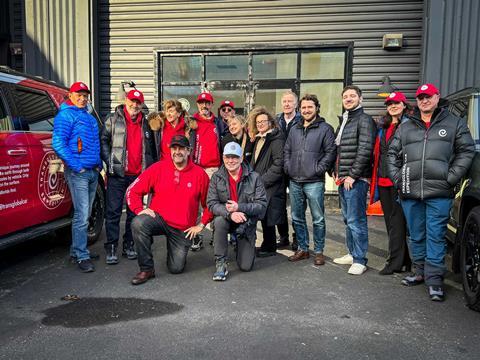
We arrived in a 6x6 Ford Super Duty F-350, fitted with 44-inch tires no less, driven by Andrew Comrie-Picard, rally champion, stunt driver and host of various television shows.
Heading through a pair of weathered iron doors we were standing on hallowed ground, a place of legends where a stroll through the membership archives reveals iconic names such as Sir Edmund P. Hillary, Robert Peary, Roald Amundsen and Neil Armstrong.
Comrie-Picard introduced us to the team, which included an international assembly of today’s foremost polar explorers: Arctic Trucks chairman Emil Grimmson, Vasily Elagin (creator of the Yemelya amphibian 6x6), Vasily Shakhnovsky (seven summits and two poles), and the list went on.
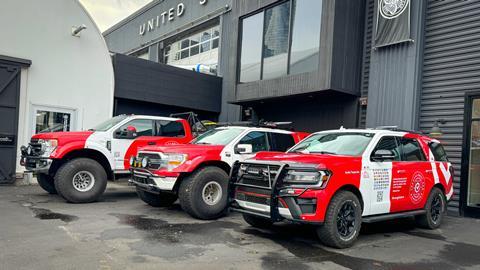
The cast also included Dr. Christian Haas, geophysics professor at the University of Bremen, and astronaut Paolo Nespoli. Together, this multi-national assemblage comprises the Transglobal Car Expedition (TGCE).
Vehicles, Pre-runs & Disaster
Due to the mixture of terrain between the poles, the vehicles would need to manage extended sections of tarmac and dirt as well as thousands of miles on soft snow.
The Arctic ice cap, which is continually pressed and folded by the Transpolar Drift Stream, will be especially challenging, as beneath lies two miles of bone-chilling seawater. Other considerations were the platforms’ capability, reliability and world-wide access to service and parts. It was decided that a fleet of Fords would fit the bill.
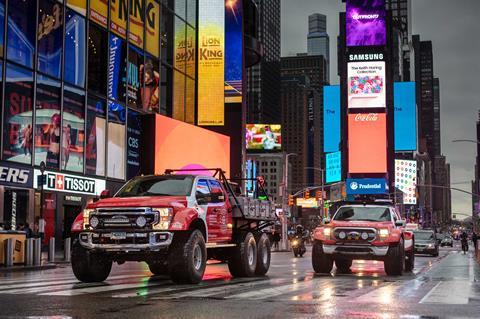
The Arctic Trucks’ AT44XDS Super Duty we were driving will be joined by AT44 F-150 hybrids and AT35 Expeditions. Although the trucks were modified to fit 44-inch tires, the Expeditions are in fairly stock trim.
The fourth platform will be the Yemelya 6x6. Designed for areas where you might need a paddle, these self-contained amphibians feature 51-inch flotation tires and can accommodate a crew of four.
During the past three years the team has made training runs to evaluate vehicles and equipment, which included treks through the western deserts and a thousand miles over tundra and sea ice to the Canadian High Arctic.
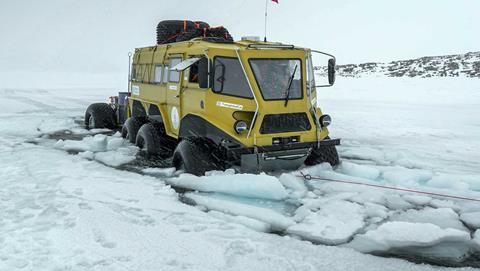
There are risks involved with an expedition of this magnitude: polar bears in the north, extended exposure to sub-zero temperatures and frostbite are an ever-present threat.
In the Arctic, when traveling on a thin sheet of ice over open water, a mistake can result in a cold and watery demise. This nearly became a reality during a 2022 test run to Resolute, Nunavut.
While en route through traditional Inuit hunting grounds one of the F-150s broke through the ice. The crew managed to scramble out before the truck sank to the bottom, but the vehicle and much of their equipment were lost.
Five months later during a complex recovery project, Comrie-Picard said, “It was never about getting the truck back. It was about doing the right thing and respecting the land.”
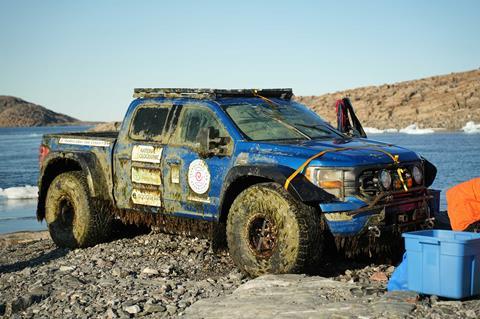
Environmental Spin
The venture has been sponsored by Goodgear, whose charter is establishing a link between global adventure, technology and scientific discovery. Dr. Haas has spent decades studying the health of polar ice, and up to this point he has been reliant on satellite and radar altimetry, which tends to overstate thickness. But TGCE will be shifting the research needle north.
While en route to the North Pole and south to Greenland, the Yemelya amphibians will be transporting electromagnetic induction (EMI) sounding equipment over the sea ice, collecting information previously off limits to the scientific community. Haas said, “These vehicles can tow our ground-penetrating sonar and give us extremely accurate, real-time data.”
TGCE has also partnered with the Cosmic Pi project to collect the first cosmic radiation data at the magnetic pole, and NOIRLab’s Globe at Night, which focuses on the effects of light pollution.
The last, which will be conducted by Nespoli, is a study on the physiological and biological changes to humans subjected to extreme conditions. In short, team members will double as surrogate guinea pigs.
These scientific initiatives landed on The Explorers Club’s radar, which has declared TGCE an official Flag Expedition—one of its coveted banners will accompany the team during its polar circumnavigation.
If they successfully reach the North Pole and Greenland without falling through the ice or being swallowed by a crevasse, they’ll ship to Europe, thread a path through the Middle East and down the breast of Africa on their way to Antarctica and the Amundsen-Scott South Pole Station.
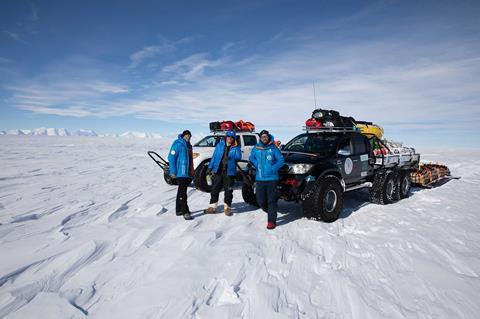
After attempting a first vehicle traverse to Cape Journey, they’ll jump across the Straights of Magellan and up the spine of the Americas. After 30,000 miles, 30 countries, five continents, and 17 months they’ll roll past Times Square and have gone full circle back to The Explorers Club.
Learn more at https://transglobalcar.com/ and join us in following their progress at https://share.garmin.com/transglobalcar.
Access More Great Stories!
This article originally appeared in OVR Issue 08. For more informative articles like this, consider subscribing to OVR Magazine in print or digital versions here. You can also find the print edition of OVR at your local newsstand by using our Magazine Finder.


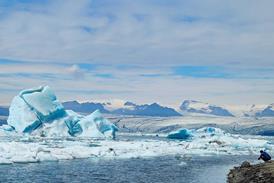
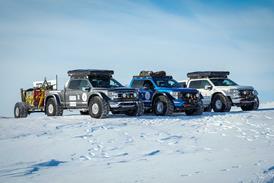
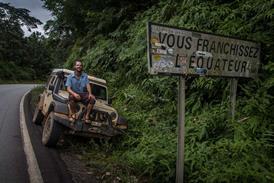
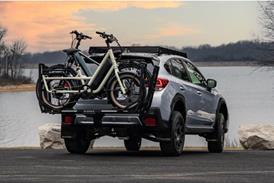
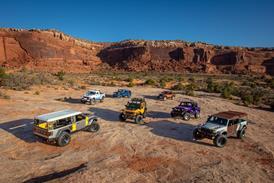
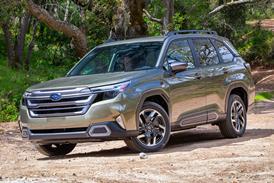

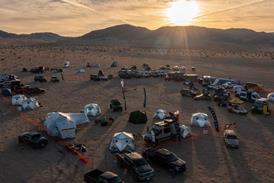
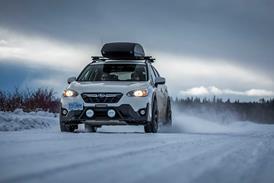
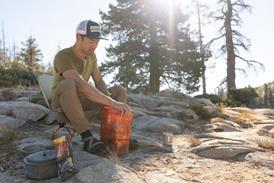
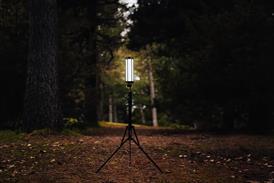
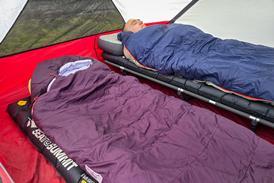

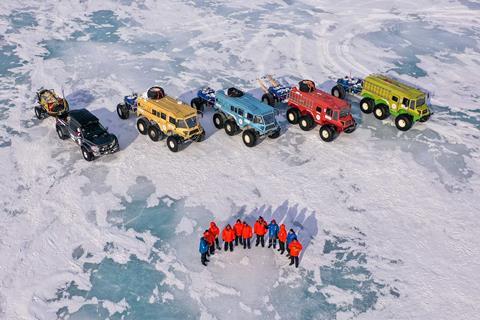
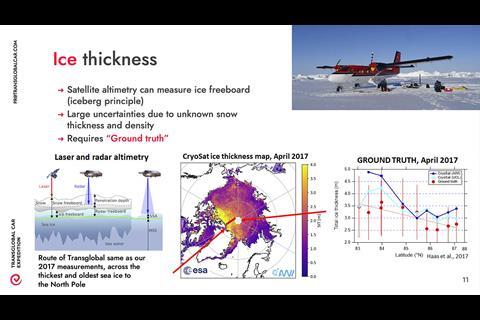
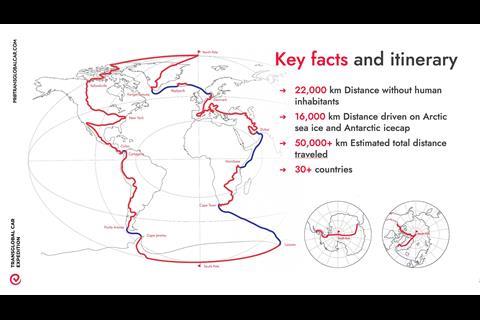
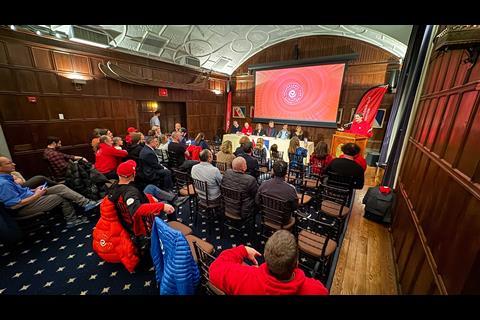
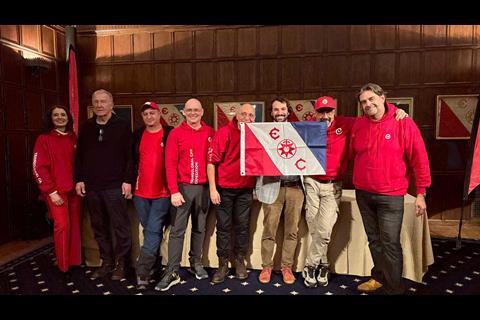





No comments yet